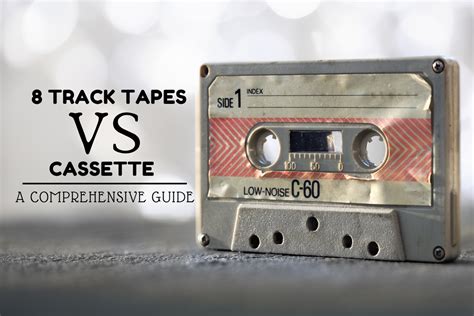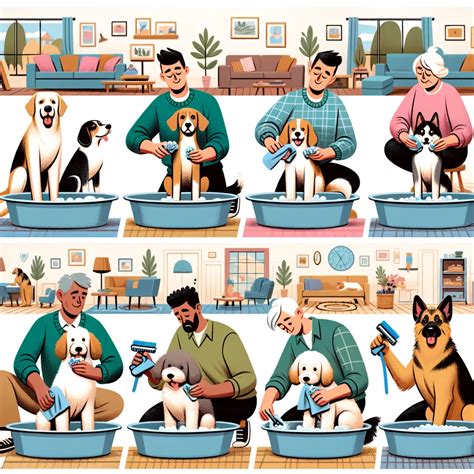
Many Gen Z individuals are unfamiliar with phrases and cultural references commonly used by older generations, leading to humorous and sometimes baffling interactions, as shared by numerous individuals over 35 online.
The generation gap has once again revealed itself, not through political divides or technological adoption rates, but through the simple, often hilarious, misunderstanding of common phrases. A recent online discussion highlighted the chasm between those over 35 and Gen Z, revealing a plethora of expressions and cultural touchstones that leave the younger generation scratching their heads. From antiquated technology references to slang terms that have long faded from popular usage, the exchanges underscore the ever-evolving nature of language and culture.
The trend started when social media users began sharing examples of phrases they used regularly, only to be met with blank stares or confused questions from their Gen Z counterparts. These anecdotes quickly went viral, sparking a broader conversation about generational differences and the unique experiences that shape our understanding of the world.
One of the most frequently cited examples revolves around outdated technology. The phrase “8-track tapes,” a reference to a music format popular in the 1960s and 70s, is often met with confusion by Gen Z, who have grown up in a world of streaming services and digital downloads. Similarly, references to “dial-up internet,” “rotary phones,” and “VHS tapes” can elicit puzzled reactions from a generation accustomed to high-speed internet, smartphones, and on-demand video.
Beyond technology, slang terms and cultural references also contribute to the communication gap. Phrases like “As if!,” popularized by the 1995 film “Clueless,” are often met with quizzical expressions. Other examples include “Catch you on the flip side,” “Don’t have a cow,” and “Take a chill pill,” all of which were common in previous decades but now sound foreign to younger ears.
The differences extend beyond specific phrases to encompass broader cultural references. Mentions of iconic television shows like “The Brady Bunch,” “M*A*S*H,” and “Happy Days,” or musical artists like ABBA, The Bee Gees, and Queen, can sometimes draw blank stares from Gen Z, who may be more familiar with contemporary pop culture.
This phenomenon isn’t entirely new. Generational gaps in language and cultural understanding have always existed. However, the rapid pace of technological and cultural change in recent decades has arguably widened the divide, creating a more pronounced disconnect between generations. The internet and social media, while connecting people across geographical boundaries, have also accelerated the fragmentation of culture, leading to the rise of niche communities and subcultures with their own unique languages and references.
The online discussions have not been without humor. Many over-35s have recounted amusing anecdotes of attempting to explain these phrases to Gen Z, often with hilarious results. One user shared a story of using the phrase “Rewind it,” only to be met with the question, “Rewind what?” Another recounted using the term “Hang up the phone,” and receiving a puzzled look, followed by the response, “Hang it up where?”
However, beneath the humor, there’s a deeper significance to these generational misunderstandings. They highlight the importance of intergenerational communication and the need for greater understanding between different age groups. While it’s easy to dismiss these differences as trivial, they can sometimes lead to miscommunication and even conflict in the workplace, in families, and in broader social settings.
Many experts argue that bridging this gap requires active effort from both sides. Older generations can make an effort to be aware of contemporary language and culture, while Gen Z can benefit from learning about the historical context behind older phrases and references. Open communication, a willingness to listen, and a healthy dose of humor can go a long way in fostering understanding and bridging the generational divide.
The online discussions have also sparked a renewed interest in the origins and evolution of language. Many users have shared etymological explanations for the phrases in question, tracing their roots to specific historical events, cultural trends, or literary works. This has led to a greater appreciation for the richness and complexity of language, and the way it reflects the changing times.
Moreover, the conversations have encouraged people to reflect on their own experiences of generational differences. Many have shared stories of misunderstandings they’ve had with their parents, grandparents, or younger relatives, highlighting the universal nature of this phenomenon.
In conclusion, while the generational gap in language and cultural understanding can sometimes be a source of amusement, it also presents an opportunity for learning, growth, and greater understanding between different age groups. By embracing open communication, a willingness to listen, and a healthy dose of humor, we can bridge the divide and foster stronger connections across generations. The shared experiences and knowledge of each generation are invaluable, and by learning from one another, we can create a more inclusive and understanding society. The anecdotes underscore the ever-evolving nature of language and culture. While the differences may seem vast, they also offer a chance for connection and mutual learning.
In-Depth Analysis and Expanded Context:
The phenomenon of generational linguistic divides extends beyond mere amusement; it reflects deeper societal shifts and the rapid evolution of culture and technology. Examining specific examples reveals the nuanced ways in which language becomes a marker of identity and a carrier of shared experiences.
Technology as a Divisive Force:
The rapid advancement of technology has undoubtedly played a significant role in widening the generational gap. Terms associated with now-obsolete technologies become unintelligible to younger generations who have never encountered them. Consider the phrase “Be kind, rewind.” This was once a ubiquitous instruction for anyone renting a VHS tape, ensuring that the next person could watch the film without delay. For Gen Z, who have grown up with streaming services that automatically resume where they left off, the concept of rewinding a physical tape is entirely foreign.
Similarly, “dial-up internet” evokes a very specific set of experiences for older generations: the screeching sounds of the modem connecting, the agonizingly slow download speeds, and the constant battle for access to the phone line. For Gen Z, who have always known high-speed broadband, this technological reality is almost unimaginable. These terms are not simply outdated; they represent a fundamentally different way of interacting with technology and the world.
The 8-track tape, a bulky and often unreliable music format, is another prime example. While some Gen Z individuals may have encountered 8-tracks in museums or vintage shops, they likely have no understanding of their cultural significance or the role they played in the evolution of music consumption. The phrase “8-track tape” is therefore more than just a historical artifact; it’s a symbol of a bygone era.
Slang and Cultural References:
Slang terms are often highly localized and time-sensitive, making them particularly susceptible to generational misunderstandings. Phrases that were once considered cool or trendy can quickly become outdated and even embarrassing to use. “As if!,” for instance, was a popular expression in the 1990s, thanks to its prominent use in the film “Clueless.” However, for Gen Z, the phrase may sound awkward or affected, a relic of a bygone era.
Other examples of slang terms that have fallen out of favor include “Catch you on the flip side,” a casual farewell that was common in the mid-20th century, and “Don’t have a cow,” an expression of mild exasperation that was popularized by the animated television show “The Simpsons.” These phrases, while once widely understood, now sound quaint or even nonsensical to younger ears.
Cultural references, such as mentions of iconic television shows or musical artists, can also create a generational divide. Shows like “The Brady Bunch,” “M*A*S*H,” and “Happy Days” were cultural touchstones for previous generations, shaping their values, attitudes, and sense of humor. However, Gen Z may be more familiar with contemporary shows and streaming content, leading to a disconnect in shared cultural experiences.
Similarly, musical artists like ABBA, The Bee Gees, and Queen, while still popular among some older listeners, may not resonate with Gen Z in the same way. Their music may be perceived as outdated or irrelevant, reflecting the ever-changing tastes and preferences of each generation.
The Role of the Internet and Social Media:
The internet and social media have both accelerated and amplified the phenomenon of generational linguistic divides. While these technologies have connected people across geographical boundaries, they have also contributed to the fragmentation of culture, leading to the rise of niche communities and subcultures with their own unique languages and references.
Online platforms like TikTok, Instagram, and Twitter have become breeding grounds for new slang terms and memes, which can quickly spread among Gen Z users but remain largely unknown to older generations. This creates a sense of linguistic exclusivity, where certain phrases and references serve as markers of in-group identity.
At the same time, the internet has also made it easier for people to learn about and appreciate different cultures and time periods. Gen Z users can access vast amounts of information about past generations, including their language, music, and fashion. This can help to bridge the generational gap and foster a greater understanding of historical context.
Bridging the Divide: Communication and Empathy:
Despite the challenges posed by generational linguistic divides, there are steps that can be taken to bridge the gap and foster greater understanding between different age groups. Open communication, a willingness to listen, and a healthy dose of empathy are essential.
Older generations can make an effort to be aware of contemporary language and culture, while Gen Z can benefit from learning about the historical context behind older phrases and references. This requires a willingness to step outside of one’s own comfort zone and engage with different perspectives.
In the workplace, it’s important for managers to be mindful of generational differences in communication styles and to create an inclusive environment where everyone feels comfortable expressing themselves. This may involve providing training on generational diversity or encouraging intergenerational mentoring programs.
In families, open and honest conversations can help to bridge the generational gap and foster stronger connections. Sharing stories, experiences, and perspectives can help to build empathy and understanding.
Ultimately, bridging the generational linguistic divide requires a recognition that language is constantly evolving and that each generation has its own unique contributions to make. By embracing diversity and fostering open communication, we can create a more inclusive and understanding society.
The Impact on Workplace Dynamics:
The misunderstandings born from generational language differences can also manifest in professional environments. Imagine a scenario where a manager, intending to motivate their team, uses the phrase “Let’s get the ball rolling.” A Gen Z employee, unfamiliar with this idiom, might misinterpret it or, worse, feel excluded from the conversation. Such instances, though seemingly minor, can accumulate and affect team cohesion and productivity.
Companies are increasingly recognizing the need for intergenerational training to bridge these communication gaps. These programs aim to educate employees on the nuances of generational language and cultural references, fostering a more inclusive and understanding workplace. Furthermore, encouraging open dialogue and creating opportunities for cross-generational collaboration can help break down communication barriers and promote a more harmonious work environment.
Mentorship programs, where older employees share their experience and knowledge with younger colleagues, and reverse mentorship, where younger employees guide older colleagues on technological advancements and current trends, can be particularly effective. These initiatives not only bridge the language gap but also foster mutual respect and appreciation for the diverse perspectives each generation brings to the table.
The Psychological Perspective:
From a psychological standpoint, the generational language gap highlights the importance of social identity theory. This theory suggests that individuals derive a sense of self-esteem and belonging from their membership in social groups, including generational cohorts. Language acts as a marker of this identity, reinforcing the bonds between members of the same generation while simultaneously creating a distinction from other generations.
The use of slang, idioms, and cultural references serves as a form of in-group communication, signaling shared experiences and values. When these linguistic cues are not recognized or understood by members of other generations, it can lead to feelings of exclusion and alienation. This can be particularly challenging for individuals navigating new social or professional environments where they may feel pressure to conform to the dominant linguistic norms.
Furthermore, the rapid pace of technological and cultural change can exacerbate these feelings of disconnect. As older generations struggle to keep up with the latest trends and technologies, they may experience a sense of being left behind, leading to feelings of anxiety and frustration. Conversely, younger generations may perceive older generations as out of touch or resistant to change, leading to stereotypes and miscommunication.
The Future of Generational Language:
As technology continues to evolve and new generations emerge, the generational language gap is likely to persist and even widen. However, this does not necessarily have to be a negative phenomenon. By embracing open communication, fostering empathy, and promoting intergenerational learning, we can transform these linguistic differences into opportunities for growth, understanding, and collaboration.
The key is to recognize that language is a dynamic and ever-changing force, reflecting the unique experiences and perspectives of each generation. Rather than viewing these differences as barriers to communication, we can celebrate them as a source of richness and diversity. By learning from one another and embracing the contributions of each generation, we can create a more inclusive and connected world.
The ability to navigate the complexities of intergenerational communication is becoming increasingly important in today’s rapidly changing society. Whether in the workplace, at home, or in broader social settings, the ability to bridge the language gap and foster understanding between different age groups is essential for building strong relationships and achieving common goals. As we move forward, it is crucial to cultivate a culture of respect, empathy, and open communication, where the voices of all generations are heard and valued.
FAQ Section:
1. What are some examples of phrases commonly used by older generations that Gen Z might not understand?
Some examples include phrases related to outdated technology like “8-track tapes,” “dial-up internet,” “Be kind, rewind” and “rotary phones.” Other examples include slang terms like “As if!,” “Catch you on the flip side,” “Don’t have a cow,” and “Take a chill pill.” There are also references to older cultural touchstones such as television shows like “The Brady Bunch,” “M*A*S*H,” and “Happy Days,” and musical artists like ABBA, The Bee Gees, and Queen.
2. Why is there a generational gap in understanding certain phrases?
The generational gap in understanding phrases arises due to rapid technological advancements, evolving cultural trends, and shifts in language usage over time. Each generation experiences unique historical events, technological innovations, and cultural influences that shape their language and references. As a result, phrases and concepts that were once common among older generations may become unfamiliar or obsolete to younger generations who have grown up in different contexts.
3. How can this generational language gap affect communication in the workplace?
In the workplace, misunderstandings arising from the generational language gap can lead to miscommunication, reduced team cohesion, and decreased productivity. Employees from different generations may misinterpret each other’s intentions or feel excluded from conversations due to unfamiliar phrases or references. This can create barriers to effective communication and collaboration, potentially affecting overall performance.
4. What steps can be taken to bridge the generational language gap?
Bridging the generational language gap requires active effort from both older and younger generations. Older generations can strive to stay updated on contemporary language and cultural trends, while Gen Z can benefit from learning the historical context of older phrases and references. Encouraging open communication, promoting intergenerational mentoring programs, and fostering a culture of respect and empathy are crucial steps. Companies can also implement intergenerational training programs to educate employees on generational differences and promote inclusive communication practices.
5. Is the generational language gap a new phenomenon?
No, the generational language gap is not a new phenomenon. Generational differences in language and cultural understanding have always existed throughout history. However, the rapid pace of technological and cultural change in recent decades has arguably widened the divide, creating a more pronounced disconnect between generations. The internet and social media have accelerated the fragmentation of culture, leading to the rise of niche communities and subcultures with their own unique languages and references, further contributing to the generational language gap.









